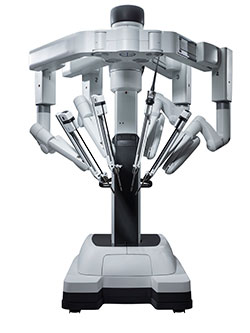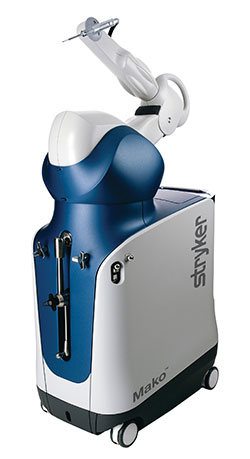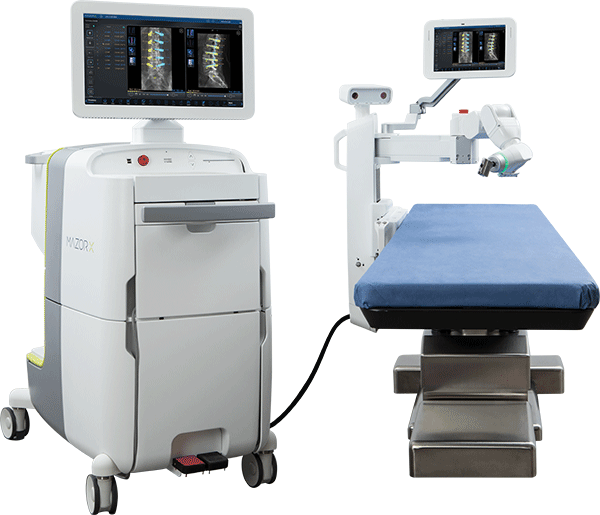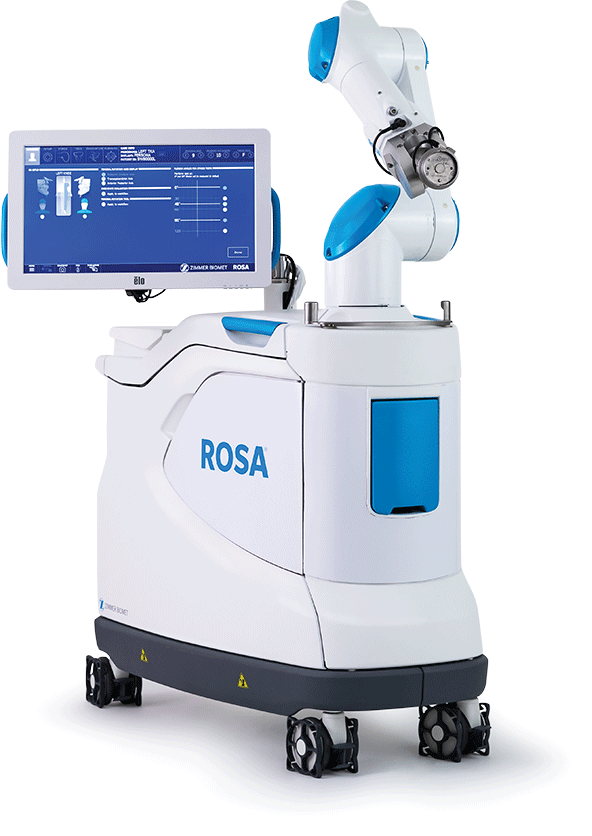Our Technology
Da Vinci Xi Surgical System
This cutting-edge technology allows complex surgery through just a few small incisions, resulting in less pain, less risk of infection and a faster recovery for patients. The mechanism of the system involves robotic-assisted wrist instruments which not only replicate a surgeon’s own hand movements, but also delivers 3-D magnified vision, removes physiologic tremors, delivers complete control and improves precision throughout the procedure 1.
The da Vinci Surgical System is used in cardiothoracic, general, gynaecology and urology surgeries.
Surgery, with the use of the da Vinci Surgical System, offers numerous potential benefits which may include: decreased post-operative pain, reduced length of hospital stay, reduced risk of infection and faster recovery.

MAKO
Through its innovative use of technology, Stryker’s MAKO robotic-arm assisted surgical system takes total and partial knee resurfacing to a new level of precision, when compared to manual techniques. By selectively targeting the part of the knee damaged by osteoarthritis, your surgeon can replace the diseased part of your knee while helping to spare the healthy bone and ligaments surrounding it. A patient-specific 3-D model is used to pre-plan your knee replacement and assists your surgeon in positioning the implant based on minute variations in patient anatomy.
It also ensures partial knee replacement surgery is available to more patients by selectively targeting the damaged parts of the knee, while avoiding surrounding healthy bone and soft tissues.
Robotic assisted surgery, has been associated with a reduced impact on bone and soft tissue.2 And many knee replacement recipients experience significant improvement in pain, stiffness, and function of their replaced joint3.
Similar to the benefits of knee replacement using the MAKO, hip replacement using the robotic arm surgical system leads to precise placement and alignment of hip prosthesis for those suffering from hip arthritis. The 3D specific model used in planning the surgery assists the surgeon in this process. During surgery, the surgeon guides the robotic arm to remove arthritic bone and cartilage within the defined boundaries defined by the surgical plan.

References:
- Robotic Surgery: A Current Perspective. Lanfranco A. et al. Ann Surg 2004;239: 14–21.
- Haddad, F.S., et al. Iatrogenic Bone and Soft Tissue Trauma in Robotic-Arm Assisted Total Knee Arthroplasty Compared With Conventional Jig-Based Total Knee Arthroplasty: A Prospective Cohort Study and Validation of a New Classification System. J Arthroplasty. 2018 Aug;33(8):2496-2501. Epub 2018 Mar 27.
- AAOS. Ortho Info. Total Knee Replacement. https://orthoinfo.aaos.org/en/treatment/total-knee-replacement/ Accessed 23 April 2019.
MAZOR X SE
An innovative and minimally-invasive approach to spinal surgery, this robotic system allows surgeons to pre-plan procedures by using 3D imaging software in tandem with robotic technology to create a unique patient surgical ‘blueprint’. During the procedure, the robotic system guides the surgeon’s tools in accordance with the patient’s spinal blueprint, to ensure implants are placed with even greater safety and accuracy.
Clinical research has shown that benefits to patients can include:
- Fewer surgical complications
- Reduced postoperative surgical pain
- Faster recovery and return to daily activities
- Fewer intraoperative x-rays leading to reduced radiation exposure

ROSA Knee System
The ROSA (robotic surgical assistant) supports surgeons in performing total knee arthroplasty (TKA ). The ROSA acts as an assistant in the operating room, combining computer navigation, soft tissue, 3D modelling and robotics into a single package. The ROSA allows surgeon to plan pre-operatively in 3D where to position the implant, which enhances precision and accuracy.
This system is designed to help your surgeon tailor the placement of knee implants for each individual patient. Data collected before and during surgery is used to ensure implant fit meets the unique specifications of the individual.
Click here for more information on the ROSA Knee System

CORI
A small hand-held robotic surgical device, the CORI assists your Orthopaedic Surgeon with pinpoint accuracy and real-time imaging during knee operations – its scope includes partial and total knee reconstructions.
The CORI mitigates the challenges of traditional methods of knee surgery and simplifies the surgical process without the extra steps required with existing robotic-assisted technology. For instance, you don’t need a CT scan – the device maps your knee in real-time.
Click here for more information on the Cori robotic system.
